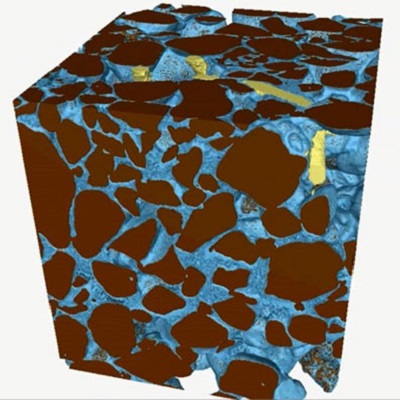Imaging the role of aggregate structure on soil hysteresis

Soil aggregates, essentially the building blocks from which soils are composed, control many soil properties on which our understanding of many of the major challenges facing society depend; how much air or water the soil can hold in order to grow sufficient crops to feed ourselves.
By applying X-ray computed tomography, soil researchers have recently made great improvements in understanding soil properties and processes inside aggregates, but there are several processes which are poorly understood. Specifically, it is well understood how the quantity and type of clay minerals, which expand and contract through absorbing and releasing water into their structure (thus changing their volume) influence the form of soil aggregates and connected pore structures which are fundamental to soil processes. This project will explore this fundamental question by developing new methods to examine the fine scale structure of soil aggregates by modifying their water content inside an X-ray CT scanner.
By doing so it will be possible to quantify changes inside aggregates with different clay properties. This will have wider implications for managing soils to enhance functions such as water storage (plant growth/flooding) and carbon storage.
The successful candidate will be trained in the use of X-ray CT scanning, image analysis/processing and quantification (University of Nottingham). They will also receive training in the use of X-ray diffraction for clay mineral analysis and quantification (BGS laboratories). In addition, the candidate will attend several specialist training courses across the Envision group of higher education and research institutes. There will be opportunities for engagement with real soil management issues via a network of farms and landowners through supervisor Paul Newell-Price and ADAS.
Eligibility: Applicants should hold a minimum of a UK Honours Degree at 2:1 level or equivalent in subjects including Environmental Science, Geography or Natural Sciences. For further details please contact Dr Barry Rawlins (bgr@bgs.ac.uk)
